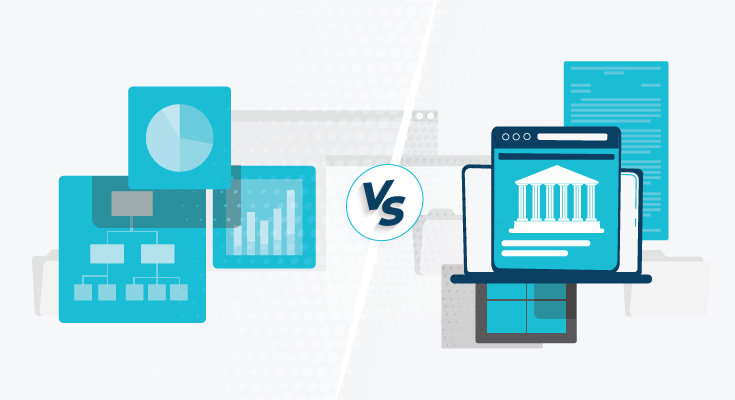Banking is one sector that is always profitable but is also constantly surrounded by fraudsters. Frauds, as well as compliance risks, are often complicated and intricate. To combat the fraud, banks and financial institutions are spending a huge amount to keep up with KYC compliance. The average cost of KYC compliance yearly is close to $100 billion globally. Even after investing such huge amounts, banks all over the globe still have to suffer losses at the hands of fraud.
That’s not all, banks have been fined more than $300 billion since 2008. To make things even worse, financial crimes such as money laundering, terrorist funding, and cyber frauds are increasing, that’s why banks and FIs need to buckle up and focus on customer due diligence.
Regulatory bodies all over the world are working round the clock to enforce KYC and KYB regulations all over the globe. One of the first regulations that were enforced was amid the Vietnam War all the way back in the 1970s.
The aim of this regulation was to counter money laundering activities from growing illegal drug trafficking. Under the BSA act, banks are legally obligated to report any suspicious consumer activity and transaction for more than $10,000.
The regulations made it almost impossible for drug dealers, terrorists and other criminals to launder money as every huge and suspicious transaction was constantly under monitoring.
Introduction of KYC to the Financial Sector
The Banking Act of 1970 later became the foundation for the Anti-Money Laundering (AML) regulation. AML regulation came to fruition in 2001 under the US Patriot Act after the incident of 9/11. Customer Due Diligence was declared necessary for all financial institutions. The term for doing CDD is more commonly known as KYC or Know Your Customer.
The KYC regulations became strict over time to reduce the flow of illegal money as much as possible. KYC asks financial institutions to verify the customer and to ensure who they are. Verifying customer identity gave birth to a series of steps and approaches to comply with the CDD and KYC laws. As the US regulatory changes tend to affect the global financial industry, the KYC and CDD laws were soon followed by the banking sector globally.
The financial sector derived several ID verification methods to successfully comply with the laws. These ID verification controls include:
- Maintaining a thorough Customer Identification Program (CIP)
- Cross verifying customers against the list of suspicious people released by Law enforcement agencies.
- Predicting and analyzing customer behavior and customer risks associated with a particular person.
- Constant screening and monitoring of transactions to look for suspicious activities and hints of money laundering.
KYC is the primary and the biggest line of defense for the financial sector against financial crimes with minor changes. For a regular customer, the KYC laws seem robust and efficient, however, in 2016, a loophole was identified in the KYC compliance regulations.
Banks were unable to identify the identity of stakeholders and UBOs of a business they provide services to. The Panama Papers Scandal was the tipping point in the KYC regulations. The scandal brought to light that legit businesses can hide the identities of bad actors and perform money laundering and financial crime. Thus, a new regulation was created known as “Know Your Business (KYB).”
How KYB Improved the KYC Regulations?
Regulatory bodies made some improvements to the KYC regulations and included Customer Due Diligence for financial institutions. Under the new law, Financial Institutions are now required to perform strong verification checks. KYB regulations are built to identify shell corporations that are involved in money laundering, tax evasion, terrorist funding, and so on.
Organizations are legally obligated to verify the person who owns the business legally and also verify the identity of stakeholders holding a minimum of 25% share in the business. The same law was passed by the EU in the fourth AML directive (AMLD4). With the release of AMLD5 and AMLD6, the process was improved to make the business entity’s due diligence more transparent.
However, KYB compliance isn’t as easy to achieve as KYC regulations. The biggest challenge in complying with KYB laws is verifying the identities of the stakeholders. In a majority of cases, no record of these entities is available. Also, different jurisdiction laws vary which makes verifying identities even tougher. These challenges sometimes make it almost impossible to verify the identities of stakeholders of a business. For firms that want complete compliance, not being able to verify identity can make them susceptible to huge fines by regulatory bodies.
Choosing Technologies as a Solution Provider
Since the financial crisis of 2008, various unique and helpful technologies are rising up to help in reducing the burden of compliance and assist in making the process easier. At its core, new technological solutions can help in strengthening the KYC & KYB programs for better compliance.
DIRO is also helping countless organizations worldwide to make their KYC and KYB compliance programs easier. DIRO online document verification tool provides instantaneous online document verification for frictionless KYC and KYB verification. DIRO’s online document verification software verifies over 7000 document types from around the globe, it also verifies document data from an original web source, thus eliminating the use of stolen and forged documents by 100%. By incorporating DIRO’s online document verification software, banks and financial institutions can fortify their compliance programs.







